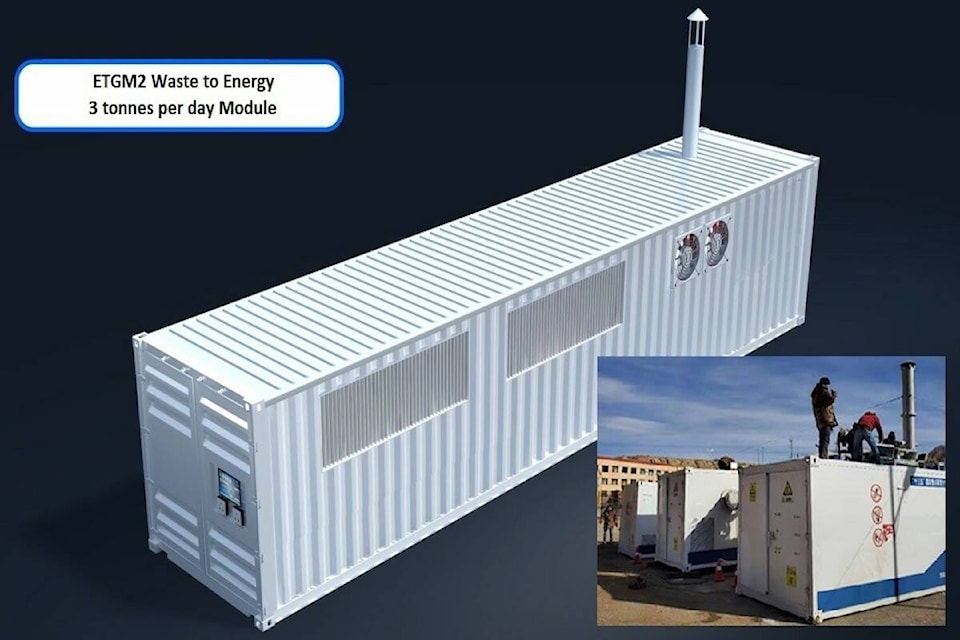Since 2012, Alberta’s ETGM2 has been striving to get more utility out of otherwise wasted industrial flare gases or products that get sent to municipal landfills.
“Of course with greenhouse gases being a problem, landfills are a big contributor to that,” said ETGM2 president Greg Harasym.
The Calgary-based company said it could help the Capital Regional District deal with its ongoing issue of finding a provincially required beneficial use for its treated sewage.
The CRD is looking to create a pilot facility at Hartland landfill that could thermally break down the region’s biosolids so the byproducts of the wastewater treatment process wouldn’t have to be shipped away, spread on the earth as a growth supplement or landfilled.
The CRD has said the process of getting a pilot thermal facility operating at Hartland could take up to three years, which was met with a reaction of “Oh wow” from Harasym.
He said ETGM2 would be willing to build a demonstration facility and a simpler system that just generates heat would take about six to eight weeks of construction, while an electricity producing facility would take four to six months. The company’s modular systems are held in shipping containers to make them easy to transport and install.
One of the thermal processing options the CRD is looking into is EMTG2’s specialization – gasification. The high-temperature process is unlike combustion due to there being basically no oxygen present as it breaks down organic molecules into mostly hydrogen, carbon monoxide and trace amounts of other gases.
That combination creates synthesis gas – also called Syngas – which can be used as a fuel for heat, electricity production or as a building block for things like aviation or diesel fuels.
Harasym said Syngas from his systems could be pumped back into CRD processes like drying treated sewage or powering the wastewater facilities, or excess electricity could be fed back into the grid.
The circular vision is similar to some methods already in use by the CRD. The McLoughlin Point Wastewater Treatment Plant sends treated solids to Hartland landfill’s Residual Treatment Plant, where microorganisms break down biodegradable material in the absence of oxygen. That produces biogas, which is then used as fuel to dry out dewatered solids and produce the pellet-like Class A biosolids.
Staff said in recent months that they hoped the pilot could process the 10 tonnes of biosolids the region produces daily. To meet that scale, Harasym said it would take around six months for them to install and start up three of their three-tonne processors. He said EMTG2 could also provide a model on the eight-week timeline if the CRD only wanted the pilot to test the feasibility of local gasification.
While it’s a relatively new technology in North America, Harasym listed off European countries that have been much quicker in using thermal processing because of their land constraints.
“We’ve got a lot of carpet to sweep our waste under,” he said of North America. “There is a lot of investigation into this type of technology now.”
An expression of interest portal for potential pilot facility builders had already closed by the time Harasym contacted the CRD. But the CRD said it would be in touch with him should the portal or opportunity reopen.
Gasification can get the feedstock down to a very small percentage of its original mass, with bio-char or bio-ash being left over. The province would still require a beneficial use for those products, but Harasym said that bio-ash is commonly mixed in concrete for LEED-certified buildings (which meet leading sustainability standards), can be used in asphalt or can supplement agriculture.
READ: Groups criticize CRD’s pace in advancing thermal biosolid-disposal facility
